UNST 151D
FRESHMAN INQUIRY:
Chaos and Community
Dr.
Grace Dillon. 725-8144 dillong@pdx.edu
CH 117Q
Office Hours: M
Course:
15912 MW
Web address for class: http://www.web.pdx.edu/~dillong/chaos
MW
Gakina-awiiya (Ojibwe: “We are all related”)
“Power at its best is love, implementing the
demands of justice.”
(Martin Luther King,
Jr., A Testament of Hope, 247)
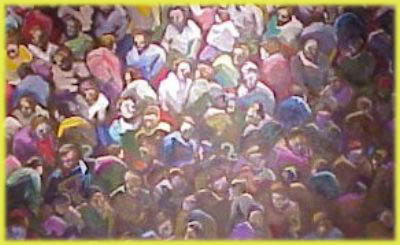 As
Michel Maffesoli says in The Time of the Tribes: The Decline of Individualism
in Mass Society, mutual aid to communities
is of great benefit. “As an alternate to the principle of autonomy of self-direction,
we can posit a principle of allonomy which is based
on adjustment, accommodation, and on the organic union with social and natural
alterity. This puissance or “will to live” is not only
hopefully the primacy of our experience, but also creates a deep vitalism, a more or less explicit vision of the organicity of the cosmos, and for Maffesoli,
a “re-enchantment of the world.” Chaos,
a “frenzy of activity, a spontaneous growth,” ironically, is the foundation
upon which this cosmos is constructed. Puissance,
“that most extreme concrete,” that will to life, survivance,
and “everyday life” when choices are
made in development of personal or social individuality leads to a cultural
moment of the highest order, a morality of responsibility, and a “collective
spirit” is created. This solidarity and reciprocity and experiencing of the other is the basis of community, even if it leads
to conflict. Patricia Hill Collins
in Black Feminist Thought: Knowledge,
Consciousness, and the Politics of Empowerment explores partial, situated
knowledge and the recognition of each
group’s need to perceive its own truth as partial, its knowledge as unfinished
when grappling with how to accept, honour, and enjoy
distinctive and irreducible differences among human groups.
As
Michel Maffesoli says in The Time of the Tribes: The Decline of Individualism
in Mass Society, mutual aid to communities
is of great benefit. “As an alternate to the principle of autonomy of self-direction,
we can posit a principle of allonomy which is based
on adjustment, accommodation, and on the organic union with social and natural
alterity. This puissance or “will to live” is not only
hopefully the primacy of our experience, but also creates a deep vitalism, a more or less explicit vision of the organicity of the cosmos, and for Maffesoli,
a “re-enchantment of the world.” Chaos,
a “frenzy of activity, a spontaneous growth,” ironically, is the foundation
upon which this cosmos is constructed. Puissance,
“that most extreme concrete,” that will to life, survivance,
and “everyday life” when choices are
made in development of personal or social individuality leads to a cultural
moment of the highest order, a morality of responsibility, and a “collective
spirit” is created. This solidarity and reciprocity and experiencing of the other is the basis of community, even if it leads
to conflict. Patricia Hill Collins
in Black Feminist Thought: Knowledge,
Consciousness, and the Politics of Empowerment explores partial, situated
knowledge and the recognition of each
group’s need to perceive its own truth as partial, its knowledge as unfinished
when grappling with how to accept, honour, and enjoy
distinctive and irreducible differences among human groups.
This Inquiry
invites you to explore the meanings of communities and the consequences for
communities of both natural and man-made phenomena that threaten and create
the conditions of chaos for communities and individuals. Through
stories, films, case studies, field research, art, science fiction, and original
projects, we will amplify and elaborate on these arenas of inquiry with our
own questions and ideas.
The initial year
of the university experience should expose you to new ways of seeing and exploring
the world, and from this personal
inquiry you should be prepared to choose a major field of concentration. In
this course, we will approach chaos and community images and topics from a
number of perspectives. Philosophy, including “natural philosophers,”
or scientists including political scientists, cultural studies, religion,
history, and literature are strongholds for the inquiry of chaos and community. Literary, anthropological, and cinematic theorists,
for instance, might study the fin-de-siecle or appropriation
of aesthetic transmutations in myths, novels, film, poetry or short stories.
Does their approach differ from or complement how historians and artists would
proceed? Will an environmental scientist apply chaos theory in the same way
that a literary critic would? Professionals in the sciences and in the humanities
in fact can help each other to understand the complexities of chaos and community
which deploys simultaneously scientific and fictional discourses and in doing
so can gain an appreciation for other disciplines. Embarking on the Chaos
and Community Inquiry will involve you in this journey of personal and professional
discovery.
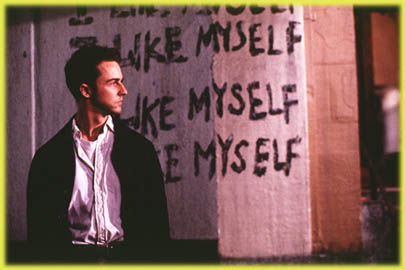 This
fall we will focus on the ethnographies,
memoirs, and mythologies that inform personal perspectives about chaos and
community, experience, and identity engaging in analyzing social and media
constructions of self and groups, giving particular emphasis to cultural theory
and cyberpunk’s, slipstream’s, and cinematic re-shaping of Native American,
Romantic, and technoscience myths that continue
to reflect our boundaries and borders of self.
What are some of the exploded, postmodern, and/or dis-imagined
communities at times re-imagined in the form of utopias or dystopias?
What are the guises and masks we seek to wear or unveil? To what degree are
certain communities veiled under the gaze of “an imperializing eye”(Stuart Hall) more than others currently and why? In what ways may we be “post-Indian” (Gerald
Vizenor), post-national (globalization theories) or at least,
postmodern? (Frederic Jameson) Can we comfortably form kinship groups that
include members who are not biologically related? What are some of the features
of male and female friendships? We will engage in the study of various forms
of grouping and communitas
as part of an effort to knowledgeably cross the divide between becoming a
myth-reader rather than merely remaining a myth-consumer. This quarter we
will concentrate on the themes of Benedict
Anderson’s sense of“imagined communities” where
nations in their modern political forms are products of viewers/”readers” who construct imaginery
communities through journalism, novelistic
fiction, language reforms, and cultural policy, bonding social capital and
bridging social capital as Putnam and Feldstein describe it, the insatiable
wanting of more than one’s due (the spirit of windigo) and the lack of curiosity
about oneself or anyone else, providing the illusion of “sincerity” which
masks inhumanity of behavior (voices such as semiotician
Roland Barthes) How can we promote a celebratory
while carefully honest and analytical awareness of the communities we study
this quarter? Elements of philosophy, sociology, history of ideas, cultural
studies, psychology, musicology, literary/ art/ film/ photography theory,
law, and anthropology will aid us in this exploration this quarter. In addition,
we will engage in a potluck Chaos and
Community film festival, an all-day spree of films including those not necessarily
shown as clips in class. This could
range from the ironic humour of The Business of Fancy Dancing or the glam rocker camp of Hedwig and the Angry Inch to the pathos
of Lost in Translation to the eeriness
of Ravenous to the ubermensch and “cyborg
schizophrenia” of Fight Club and
Brad Pitt’s popular culture critic re-appearance in The Twelve Monkeys.
This
fall we will focus on the ethnographies,
memoirs, and mythologies that inform personal perspectives about chaos and
community, experience, and identity engaging in analyzing social and media
constructions of self and groups, giving particular emphasis to cultural theory
and cyberpunk’s, slipstream’s, and cinematic re-shaping of Native American,
Romantic, and technoscience myths that continue
to reflect our boundaries and borders of self.
What are some of the exploded, postmodern, and/or dis-imagined
communities at times re-imagined in the form of utopias or dystopias?
What are the guises and masks we seek to wear or unveil? To what degree are
certain communities veiled under the gaze of “an imperializing eye”(Stuart Hall) more than others currently and why? In what ways may we be “post-Indian” (Gerald
Vizenor), post-national (globalization theories) or at least,
postmodern? (Frederic Jameson) Can we comfortably form kinship groups that
include members who are not biologically related? What are some of the features
of male and female friendships? We will engage in the study of various forms
of grouping and communitas
as part of an effort to knowledgeably cross the divide between becoming a
myth-reader rather than merely remaining a myth-consumer. This quarter we
will concentrate on the themes of Benedict
Anderson’s sense of“imagined communities” where
nations in their modern political forms are products of viewers/”readers” who construct imaginery
communities through journalism, novelistic
fiction, language reforms, and cultural policy, bonding social capital and
bridging social capital as Putnam and Feldstein describe it, the insatiable
wanting of more than one’s due (the spirit of windigo) and the lack of curiosity
about oneself or anyone else, providing the illusion of “sincerity” which
masks inhumanity of behavior (voices such as semiotician
Roland Barthes) How can we promote a celebratory
while carefully honest and analytical awareness of the communities we study
this quarter? Elements of philosophy, sociology, history of ideas, cultural
studies, psychology, musicology, literary/ art/ film/ photography theory,
law, and anthropology will aid us in this exploration this quarter. In addition,
we will engage in a potluck Chaos and
Community film festival, an all-day spree of films including those not necessarily
shown as clips in class. This could
range from the ironic humour of The Business of Fancy Dancing or the glam rocker camp of Hedwig and the Angry Inch to the pathos
of Lost in Translation to the eeriness
of Ravenous to the ubermensch and “cyborg
schizophrenia” of Fight Club and
Brad Pitt’s popular culture critic re-appearance in The Twelve Monkeys.
 Fall
Learning Outcomes: By the end of this course, you should be able to:
Fall
Learning Outcomes: By the end of this course, you should be able to:
1. Define
the term “community” and construct an argument about the significance of the
idea. (Critical Thinking)
2. Using
scholarly terms and perspectives, discuss how people from several academic disciplines approach the
issue of diversity in human communities. (Critical Thinking and Diversity)
4. Using statistical tools, numerical
data, and appropriate charts, graphs, and illustration, explore and explain the main characteristics of the communities we
have worked with in class. (Critical Thinking, Numerical Literacy)
5. Appropriately
identify your need for information, effectively
research library and web sources
for that information, and critically
evaluate whether you can trust it. (Critical
Thinking)
6. Appreciate
the diversity of thought represented in your Freshman Inquiry class. (Critical
Thinking and Diversity)
7. Demonstrate
basic proficiency in Word, Excel, Powerpoint,
SPSS, e-mail services, and web-authoring software. (Critical Thinking and
Communication)
8. Closely
and critically read a variety of challenging texts.
(Critical Thinking)
9. Construct
written arguments that are thoughtfully and logically organized and relatively
error-free. (Critical Thinking, Written Communication)
10. Present oral talk-stories and arguments that are
thoughtfully and logically organized and relatively persuasive. (Critical
Thinking, Oral Communication)
11. Analyze and decipher values that adhere to images in our culture.
(Critical Thinking, Ethics and Social Responsibility, and Visual Literacy)
The
Right to be Successful: Students with disabilities who may require accommodations
are encouraged to contact the
REQUIRED
TEXTS and Materials: 1)Fernea,
Elizabeth Warnock. Guests of the Sheik: An Ethnography of an
Texts
and Materials:
Note: Hold on to all assigned texts and readings in your Smart Copy packet;
we'll be using them throughout the year. The books are available at the PSU
Bookstore. The Smart Copy packet is available at
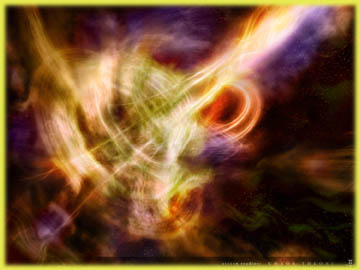 COURSE
SCHEDULE: The day-to-day schedule
follows. Note that you should complete reading
assignments by the day on which they are listed.
COURSE
SCHEDULE: The day-to-day schedule
follows. Note that you should complete reading
assignments by the day on which they are listed.
WEEK
ONE:
M 9/27 Introduction to the course and review
of assignments. Henri Lefebvre,
Michel de Certeau, and semiotician
Rolande Barthes’ “frozen
speech.” Everyday
living, cultural globalization, and community.
W 9/29
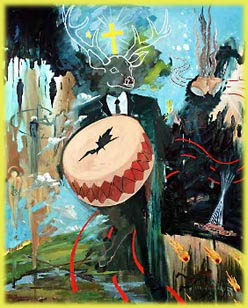 WEEK
TWO: Survivance
Tales, Naanabozho, and the Uncanny
WEEK
TWO: Survivance
Tales, Naanabozho, and the Uncanny
M 10/4
W 10/6 Dr. Charles
White, Guest lecturer on Quantitative Survey and SPSS. Mary
Ann Barham. IASC Advisor.
barham@pdx.edu.
Peer Mentor Session 1 ( M 10/4): Group process
skills. Using Internet and Portals to gather further materials from newspapers,
popular magazines,
or national magazines,etc. Distinguishing the sensational from the more
informed.
Peer
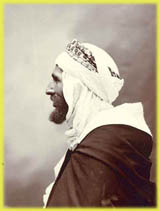 WEEK
THREE: Wisdom Traditions, Collective Glory, and the Carnivalesque
WEEK
THREE: Wisdom Traditions, Collective Glory, and the Carnivalesque
M 10/11
W 10/13
Peer Mentor Session 1 (M 10/11):
Reading: Fadwa El Guindi’s “Veiling Resistance.” (Pck.3).
Peer Mentor Session 2 (W 10/13): Library
session held at library. Note hyperlink on class webpage to library sources
for the chaos and community theme. Jennifer
Dorner (dorner@pdx.edu)
is our library contact.
WEEK
FOUR: Ray-Gun Gothic, the Crisis of Raciology, Tyranny
and Fascism
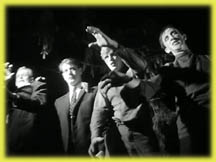 M
10/18 Readings: Gibson’s “Gernsback
Continuum,” Cordwainer Smith’s “Alpha Ralpha Boulevard,” and “Postmodern” excerpts in Practices of Looking(Pck.4, 5, and 6 )
Technocracy, projected images of cityscape, and postmodernism. Dialogue journal
response due.
M
10/18 Readings: Gibson’s “Gernsback
Continuum,” Cordwainer Smith’s “Alpha Ralpha Boulevard,” and “Postmodern” excerpts in Practices of Looking(Pck.4, 5, and 6 )
Technocracy, projected images of cityscape, and postmodernism. Dialogue journal
response due.
W 10/20
Peer Mentor Session 1( M 10/18):
Peer Mentor Session 2 (W 10/20): Review
if needed: Photoshop, Powerpoint, and scanner usage.
Prep for E-Photo Essay. Proper citation and citing sources in the MLA and APA format.
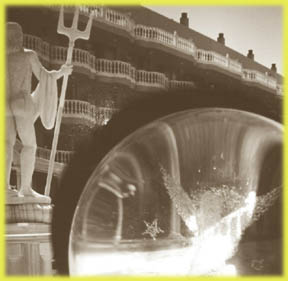 WEEK
FIVE: Interlocking Oppressions and The Figure of
Abstinence, Whu Chutah!
WEEK
FIVE: Interlocking Oppressions and The Figure of
Abstinence, Whu Chutah!
M 10/25 Readings: Patricia
Hill Collins’ “Knowledge, Consciousness, and the Politics of Empowerment,”
Nalo Hopkinson’s “Tan-Tan
and Dry-Bone,” and “Ganger(Ball Lightning),” Ursula K. LeGuin’s “New Atlantis,” Michael Coney’s “The Byrds,” Bruce Sterling’s “In Paradise,” and Diane Glancy’s “Aunt Parnetta’s Electric Blisters.” (Pck.
9-15) Science
fiction short stories handout and discussion for Essay One. Dialogue journal response due.
W 10/27
Peer
Peer Mentor Session 2 (W 10/27): Midterm review.
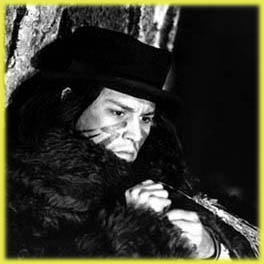 WEEK
SIX: Eating the Scroll, Pleonexia, and the Figure of Excess
WEEK
SIX: Eating the Scroll, Pleonexia, and the Figure of Excess
M 11/1
Readings: Michael
Swanwick’s “A Midwinter’s Tale, and Henry Giroux
and Imre Szman’s “Ikea Boy Fights Back”
(Pck. 15 and 16) The figure of Excess, cannibalism, the windigo spirit, the logic of late capitalism, and Ikea Boy.
Ravenous, Dead Man,
and Fight Club
W 11/3 In-class Midterm (Parts one and two)
Peer Mentor Session 1 ( M 11/1): Fictional Essay
rough draft due. Peer editing.
Peer Mentor Session 2 (W 11/3): E-Photo essay (Part three of the Midterm)
due and showcased in-class.
WEEK
SEVEN: Restless Young Men
M 11/8 Reading: Leslie Marmon
Silko’s “Long Time Ago.” Smoke Signals, The Business of Fancy Dancing,
Desperado, Ravenous, and Chocolat. Postcolonial storytelling and ceremony.
W 11/10
Peer Mentor Session
1(M 11/8):
Peer Mentor Session
2 (W 11/10): "Talk stories". The oral art of storytelling speech due (10 minutes). Taped session for our archives.
 WEEK
EIGHT: From Carnival to Transgression
WEEK
EIGHT: From Carnival to Transgression
M 11/15
W 11/17 Reading: Samuel Delaney’s “Aye, and
Peer Mentor Session 1(M 11/15): The
oral art of storytelling speech due (10 minutes). Taped
session for our archives continued.
Peer Mentor Session 2 (W 11/17): Continuing
the dialogue on transgender and sexual continuum tropes.
WEEK
NINE: Moral Panic, Gifting, and Revolution as Simulacra
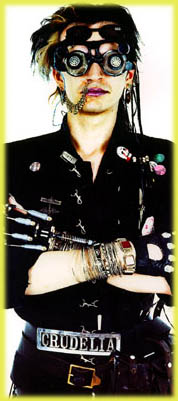 M
11/22
M
11/22
W 11/24
Peer Mentor Session 1(M 11/22): Group
project workshop.
Peer
WEEK
TEN: The “punk” in Cyberpunk, activist
Hip-Hop, and Musicology
M 11/29
W 12/1 Begin
presentations of Final Group Projects.
Peer Mentor Session 1(M 11/29): Portfolio
reflections.
Peer Mentor Session 2 (W 12/1): End-of-quarter celebration!
FINALS
WEEK: Final Exam Time slot on Wednesday, December 10,
Group Projects continued. Final Portfolio due.